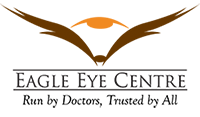
Myopia affects over 1.6 billion people globally, with two thirds of sufferers in Asia. Scientists from Australia have found that myopia progression can be reduced with a new lens technology. This ground breaking discovery was based on research conducted by University of Houston College of Optometry and the Brien Holden Vision Institute, located at the University of New South Wales.
Professor Earl Smith III from University of Houston College of Optometry has researched on the nature and cause of myopia and this led to the discovery that peripheral vision may play a major part in stimulating eye growth and myopia. His results suggest that peripheral image quality should be considered when designing myopia treatment program for children. In myopia, conventional single vision spectacle lenses correct for central vision and the image is projected on the retina, however, the peripheral image is projected behind the retina. This contributes to the elongation of the eye ball which results in myopia progression. He concluded that by prescribing lenses that correct central vision and increasing the curvature of field to correct peripheral vision, so that the peripheral image is on or in front of the retina, progression of myopia in children may be slowed.
Professor Brien Holden conducted a clinical trial on 210 Chinese children aged 6 to 16 years with myopia between -0.75 to -3.50 and astigmatism of less than -1.50. With the use of Zeiss MyoVisionTM spectacle lenses, that corrects central vision and peripheral vision, the trial concluded that myopia progression is reduced by 30% in a subgroup of younger children (6 to 12 years old) with at least one myopic parent. The unique lens designs of MyoVisionTM act to curve or shift the peripheral image forward, thereby removing the stimulus to eyeball elongation and myopia progression.
Based on this study, Eagle Eye Centre designed a myopia control program using Zeiss MyoVisionTM spectacle lenses to monitor childhood myopia. The Eagle MyoVision Program is a 12 month myopia monitoring program supervised by qualified optometrists at Eagle Eye Centre. The optometrist will ensure the marking up on the lens is precise so that the central fitting dot is fitted on the pupil centre. Frame selection and fitting are also important as the frame should be robust and fit well on the nose bridge. There will be a total of 6 optometrist consultations, 6 refraction tests to monitor myopia change and 2 axial length measurements to monitor eyeball lengthening. Eagle Eye Centre believes that this program has the potential that will benefit all myopes who are still experiencing rapid progression.
Features of Eagle MyoVision Program
- Easy and fast adaptation
- Slow myopia progression
- Low-risk treatment using spectacle lenses
- Scheduled 3 monthly reviews to avoid large myopia progression
